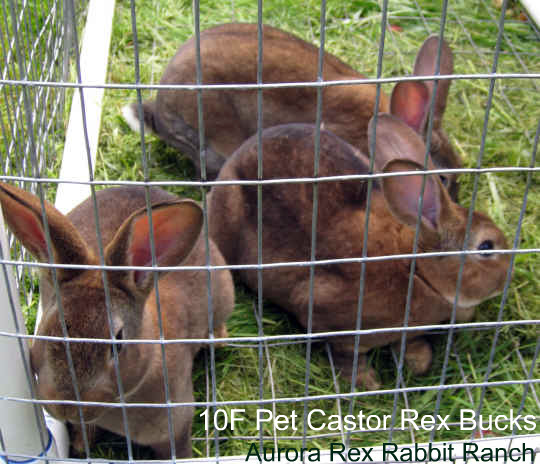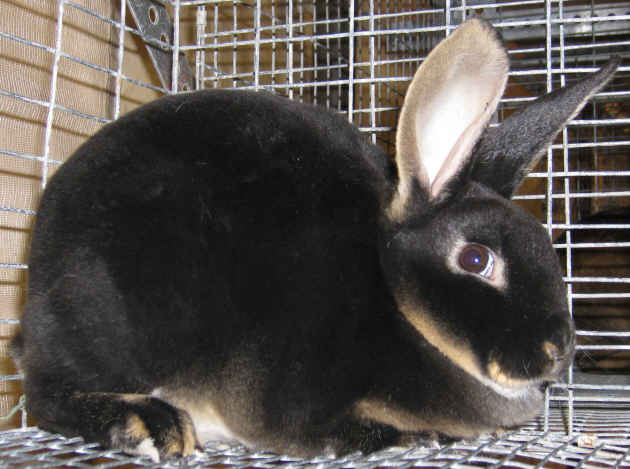Rabbit Rhythms of October
Choices Part II:
What kind of rabbit is best for you?
Today, thanks to selective breeding practiced by breeders over the last 150+ years, we have an abundance of rabbit breeds that are well suited to a variety of human needs. The vast majority of the selective breeding has been geared toward a specific purpose, whether for meat, for wool, or for a specific type or color of rabbit fur.
The first pet rabbit owner, or perhaps the first pet rabbit owner on record, may be Marie Antoinette, queen of France. She kept several angora rabbits simply as pets.
In the last 100 years, as our societies moved away from their agrarian (farm-centered) lifestyles, we began purchasing our food from grocery stores or farmer’s markets instead of raising it ourselves. Instead of keeping rabbits for specific purposes such as meat or fur, many people now keep a rabbit or two as pets.
As a result, selective breeding has occurred that delivers variations in rabbits' personality, size and looks.
What kind of
rabbit are you looking for? We’ve listed nearly every breed of rabbit in the world (that we know of) at Rabbit Breeds.
All rabbit breeds in the USA are listed here.
Chances are, there’s a breed of rabbit that is perfectly suited to either your needs or your appreciation of rabbit-cuteness.
- Angora rabbits grow fur, or wool as it is usually called, that is upwards of 6-8 inches long. Angora wool is crazy warm, and can be spun into no end of very warm and useful products. Best of all, the wool can be harvested again and again without harming the rabbit. You can find several breeds of angora rabbits, each providing a slightly different type of wool, or that grow in size from small to quite large.
- Meat rabbits are typically large rabbits, but not huge. This is because giant rabbits often have giant bones. Giant bones mean a reduced dress-out percentage - less meat in your crock pot. But in all actuality, if you’re raising meat rabbits for yourself in your backyard, you can certainly raise any of many rabbit breeds - they’re all made of meat.
- Fur rabbits are usually fairly large, because it is easier for the furrier to work with a decent-sized pelt. The furriers have preferences as to color depending on the projects they are working on. Black, castor, chinchilla and otter varieties in Rex pelts are favored. Satin rabbits also have a distinctive coat, lustrous and shiny. You’ll never forget one when you’ve seen them. But normal rabbit fur can and is used for many garments, spreads, wall hangings, and more.
Just in case, we’ll point out here what we hope is painfully obvious:
No rabbit is ever skinned alive, and no rabbit is butchered wantonly for its pelt alone. These are gruesome myths (read flat-out lies) perpetrated by the animal rights extremists. Meat rabbits are butchered humanely and painlessly at a young age. Their meat goes to market and their pelts, while not suitable for garments, goes to make felt. Fur rabbits are butchered humanely just as soon as they mature into adults - around 6 months of age. The pelts go to the furrier, and their meat is sold in grocery stores or farmer's markets. Every part of the rabbit goes to good use.
- Pet Rabbits: This is the category in which the sky is really the limit. What kind of rabbit do you appreciate? Lop eared? Small, medium, large, gargantuan? Solid or spotted?
There are a few breeds that have become big favorites as pets - see our review at Small rabbits.
(Below: Pet rex rabbits)

Choices Part II:
On Selectively Breeding Rabbits
Selective breeding is the best way to improve one's rabbit breeding stock. The process is not complicated: Only breed together animals that demonstrate excellent traits or that will improve upon your herd's current genetic traits.
Our friends at a local Washington State rabbitry have been breeding carefully and selectively for several years, and their hard work is showing. They recently won a prestigious award at a major rabbit show.
Their breeding program has been focusing on the following characteristics: Health, vigor, litter size, time to market, rabbit condition, reasonable breed-back times. Today, they say...
- Litter size averages 10-12 kits
- Health and vigor is always of primary priority when selecting for breeding stock
- The young fryers reach market age at 8-10 weeks, which is nearly as successful as that achieved by commercial breeders
- The does hold their condition well through multiple pregnancies
- A 6-week breed back after kindling is not stressful on the does
Having achieved all of the above, they are now free to concentrate on excellent temperament.
As a result of wise selective breeding, the rabbits benefit hugely with great health and an excellent standard of life. Humans benefit as well. Those that do business with such a breeder can have confidence that the animals will perform as expected, remain healthy for the duration, AND win at rabbit shows - the whole package.
In the breeder’s words: "You get what you select for, and if you don't compromise and insist on achieving the whole package, it can happen."
(Below: Winning type in an otter rex rabbit)

Healthy Rabbits
Metal Rabbit Cages
An anonymous visitor to Raising-Rabbits came across our rabbit cage information. This person must have been used to the "gotta-have-a-solid-bottomed-hutch" line, because he seemed quite surprised to find our statements about how healthy wire cages actually are.
We'd like to commend this anonymous person - he or she took the time to write to us and ask for clarification, and he did it very courteously. Here’s his query in full. You can click on the link to read our response.
Metal Rabbit Cages
"Your metal cages hanging from the PVC framework don't appear to have anything solid on the bottom -- just the metal cage. We have always been told that is not good and the rabbits need something smooth to get their feet off the narrow wire floor. Can you explain why we have been told this? It appears there must be opinions at play here. Thanks.
Thanks for writing,
Anon. I hope we were a help to you.
Overheard at Raising-Rabbits.com
"Rabbits should rank high on every prepper’s must-have list."
(Richard, KY)
Like this newsletter?
Maybe your friends would too...
Your friends at Raising-Rabbits.com wish you a wonderful November.
Enjoy your rabbits!
|

